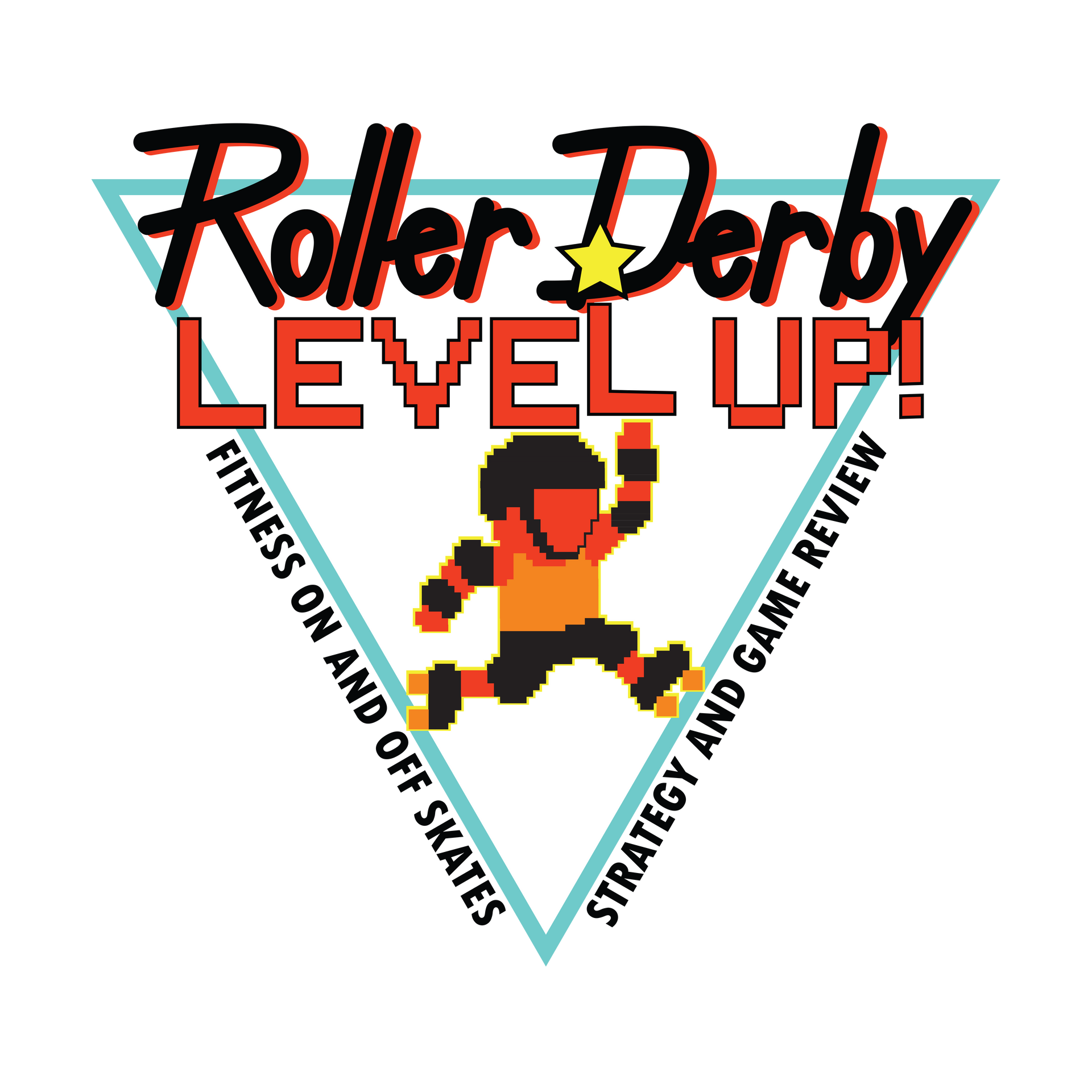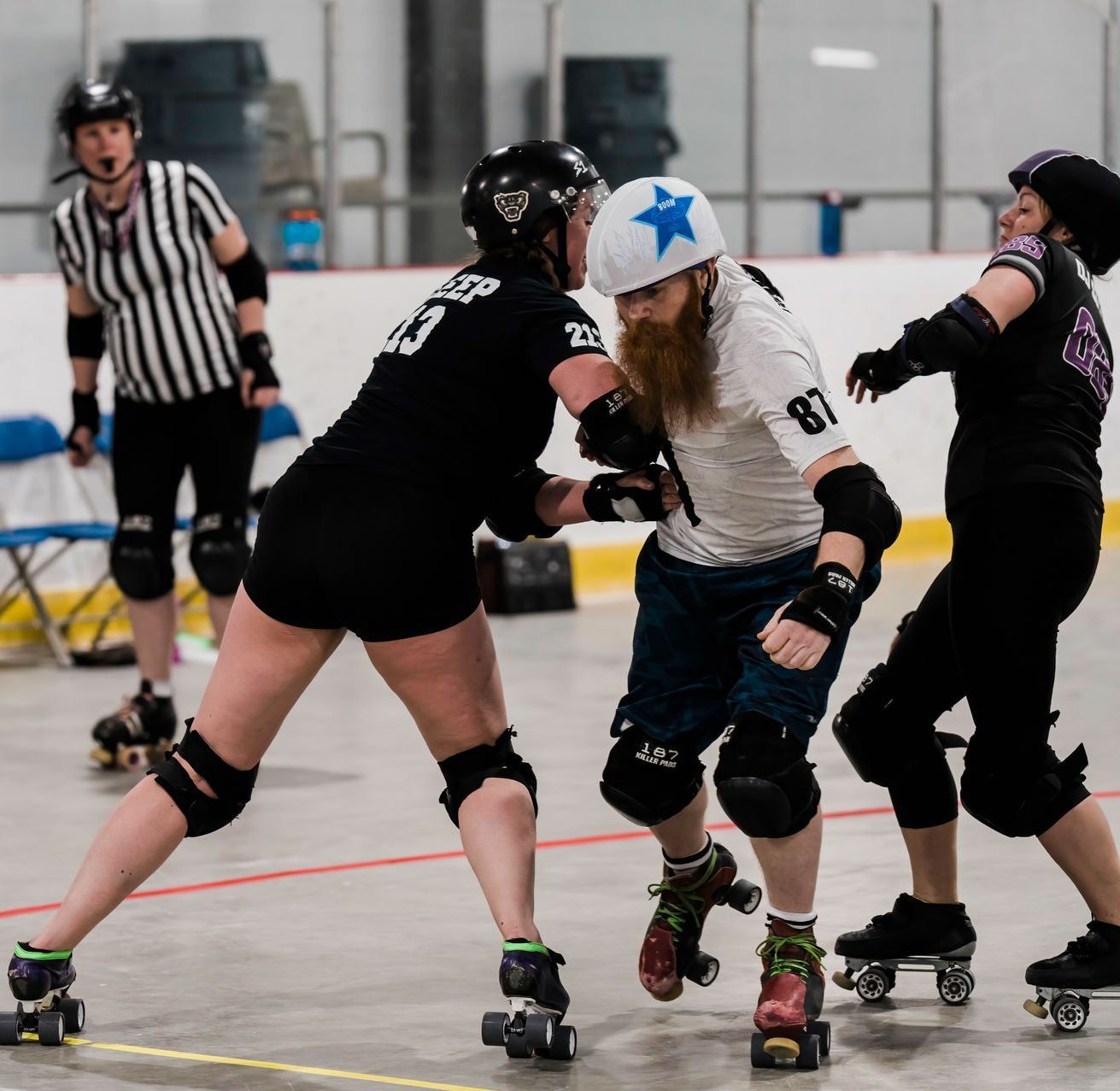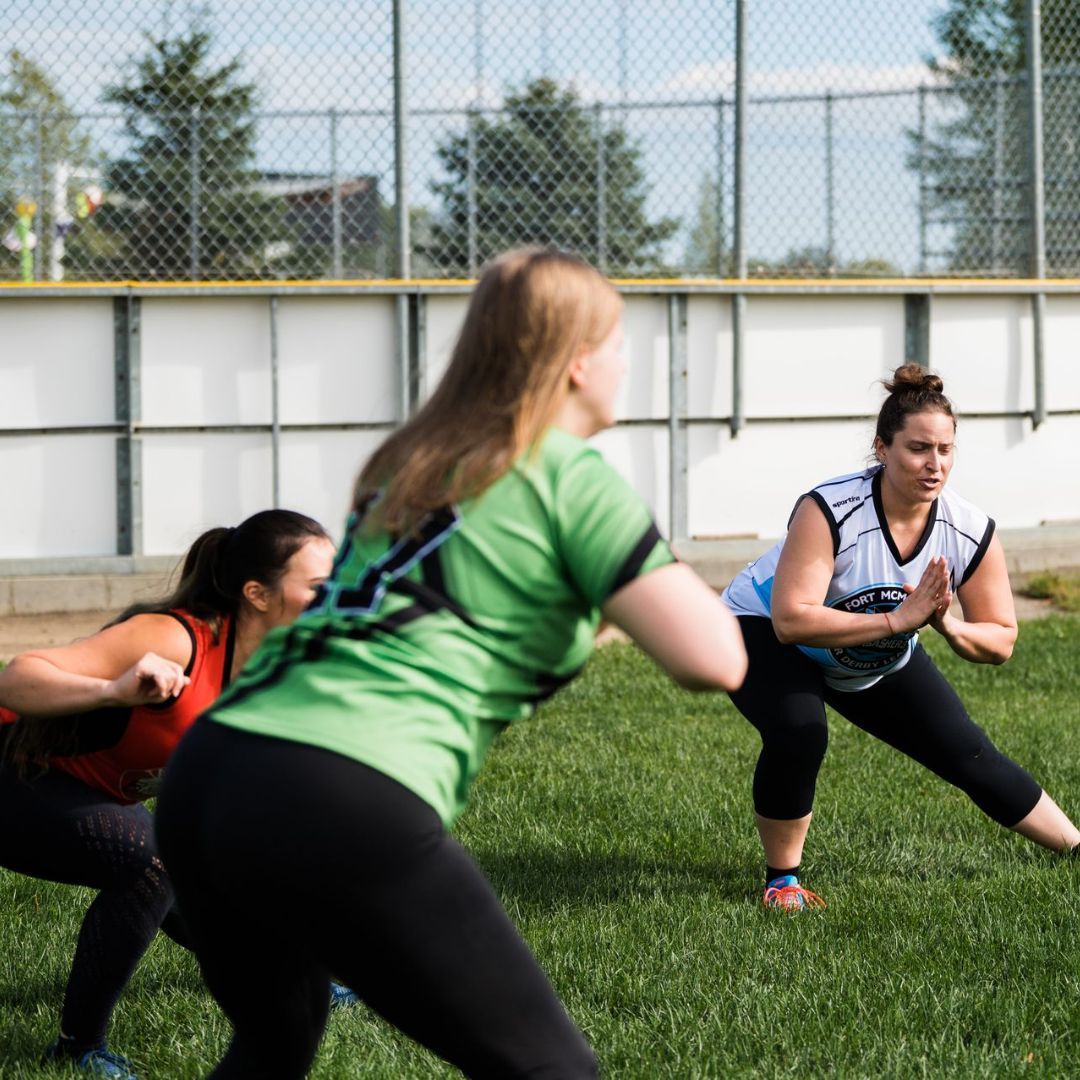Velocity Based Training
Kimberly Wheeler • October 10, 2019
Advancements in technology mean advancements in fitness tracking

Resistance training is a key part of every workout program, regardless of your goals. It is important in weight loss, muscle gain, and explosive strength. The two main focuses of resistance training are Intensity and Volume.
Intensity is the amount of weight you are lifting, or your load, whereas volume is the number of repetitions and sets you complete. The balance between the intensity and the volume of your resistance training will depend on your goal. I have already covered weight training and reps in this Blog Post.
For any regime, you need to determine the proper intensity for that volume. Typically, this is down by determining your One Repetition Maximum (1RM). 1RM is the maximum weight you can lift properly once. Your 1RM should be tested for multiple lifts, since the weight will be different for each major muscle group. Once you’ve determined your 1RM, your program design will be based on a percentage of that weight, matched to that volume.
Science for Sport has an article
explaining how to the 1RM test.
Downsides to keep in mind with the 1RM test method are:
- First time lifters may not have proper form to complete the test
- It is time consuming
- Your 1RM changes as you grow stronger, requiring frequent re-testing
- You 1RM can change on a daily basis depending on your fatigue and hormonal balance that day
An alternative to the 1RM method of resistance training is Velocity Based Training (VBT). Velocity based training uses technology to measure the movement velocity of a lift. For example, you could measure the speed it takes to press a bar from your chest to fully extended (a bench press). The resulting data would give you the movement velocity is m/s. Your maximum movement velocity is known as movement velocity threshold (MVT). In order to determine your MVT you should complete the same test as the 1RM but with your VBT gadget.
The benefits of VBT immediately counter the downsides of 1RM.
- You don’t need to complete the VBT test as often as the 1RM. You’ll notice the MVT is given in meters per second, not as a weight like the 1RM. What this means is that as you grow stronger and increase your weight, the speed at which you complete your maximum weight lift should remain the same.
- The MVT is easily adjustable for your daily training readiness (i.e. fatigue and other changes that affect your strength). When using the %1RM method, you are scheduled to lift 80% of your 1RM for that day. You load on the selected weight and complete your workout, but maybe don’t get as many repetitions before failure. With the %MVT method you can immediately see the inability to reach the desired velocity and adjust the weights to make your repetitions for that workout.
The downsides to MVT training are
- It is individual and exercise dependent, so more initial tests may be required
- The technology is pricey
Velocity based training paired with the improvements in technology is making it a more viable resistance training tool. It is a great tool to maximize workouts while allowing for day-to-day training fluctuations. Before jumping on the latest technology train make sure you check out the different devices and choose the one that is right for your workout. As always, make sure you have the basic movements of your workout down before adding in new technology, VBT is useless if you aren’t doing the lift correctly to begin with.
References
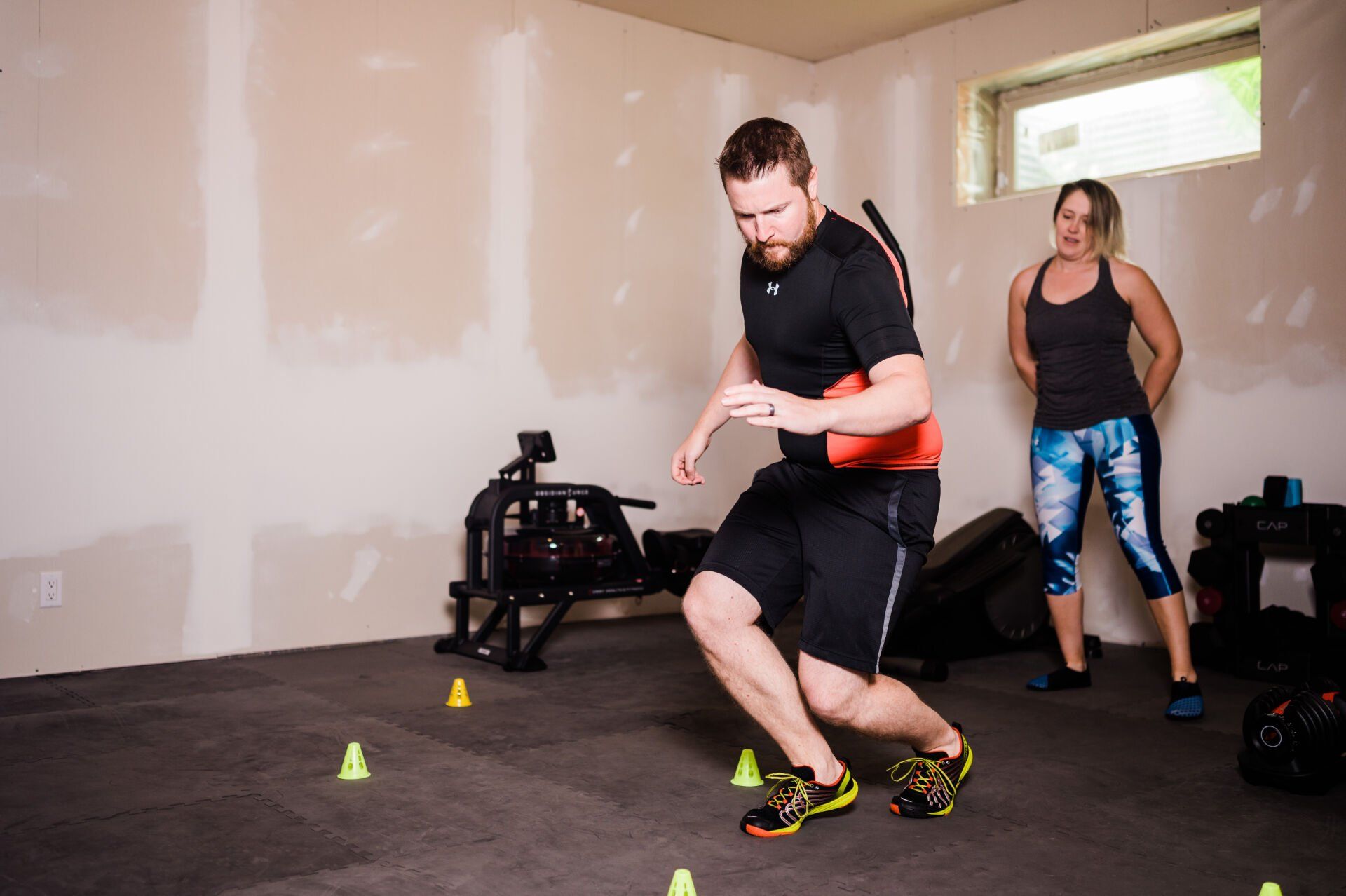
In my last blog post , we went over how to judge the training intensity of a specific workout. But that’s not the only intensity you should track for your training. Your entire training schedule should have a cadence to it, and if rests aren’t built in, your body will begin to feel the fatigue of constant training. For athletes, periodization training is the go-to method to schedule long term training. Periodization training works by breaking down your year into different sections, aiming to be in peak condition for a specific major event or events. Periodization training is divided into cycles, to better plan your time. These are called Macrocycles, Mesocycles, and Microcycles. The Macrocycle covers your full year, it will show all the training plans you have. The Mesocycle is a specific training block; often designed around a training period, like pre-season, or a training goal, like endurance training. Each Mesocycle is typically 3-6 weeks. The amount of weeks will depend on the individual workout intensities of your plan. For example, if you are training for increased power and doing a lot of plyometric workouts, you will likely only be able to do those for 3 weeks before needing a rest. Finally, the Microcycle is a single week of training. This is where you will break down your daily activities and add in your active rest days.
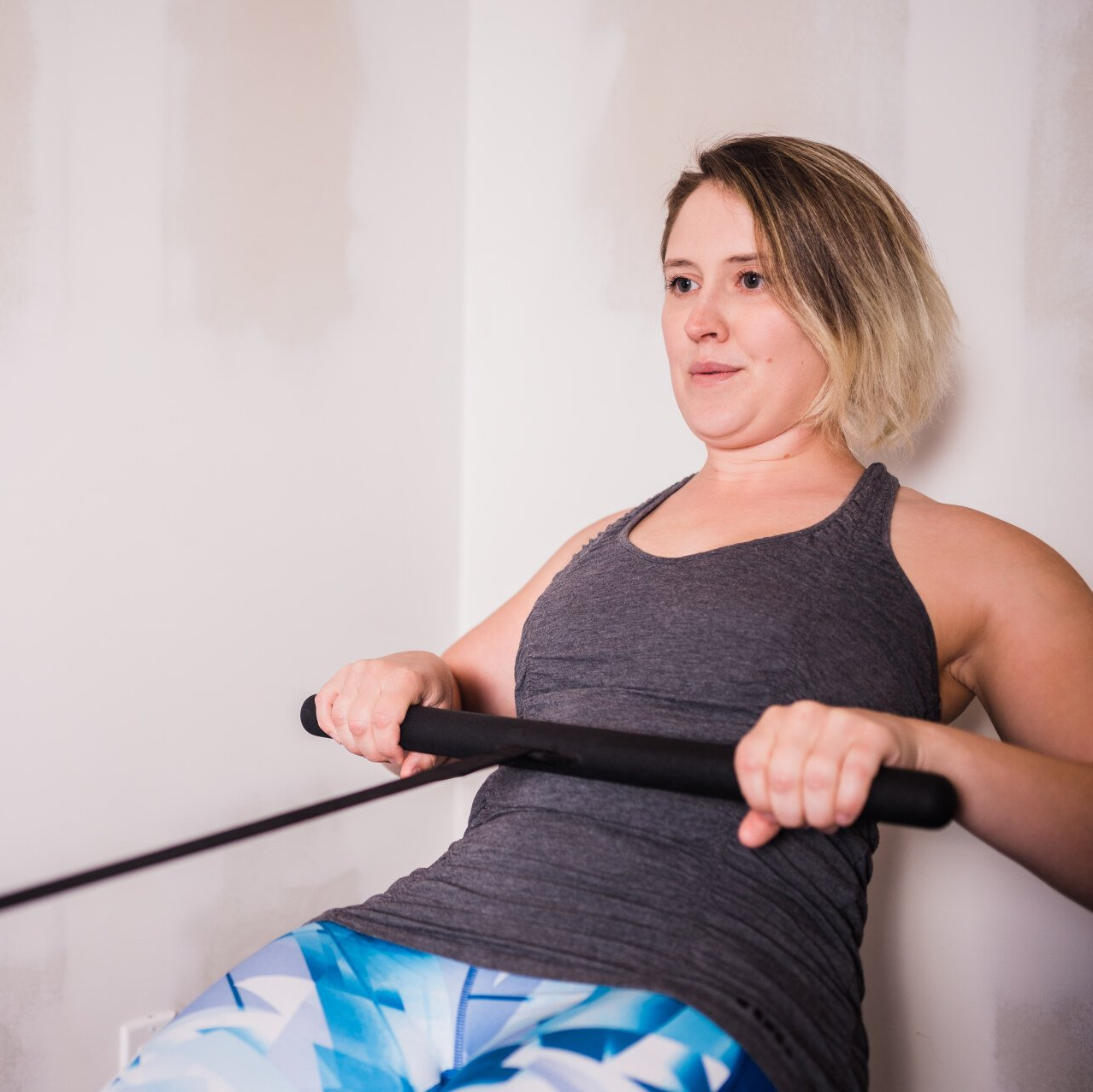
You have a training plan. Maybe you made it yourself, found something online, or purchased it. Regardless, now you have a plan and you are seeing it through. However, an often missed component with most workout plans is the lack of direction regarding intensity. If you are looking for that kind of direction, you’ve come to the right place. Intensity is measured via your heart rate zone and your perceived level of work. For this blog I’m going to break intensity down into Low, Medium, and High: Low Intensity will be defined as being able to easily maintain a conversation while doing an activity. Stretching is a great example of low intensity. Medium Intensity is being able to have short exchanges during activity. Jogging for many people falls under medium intensity. High Intensity will be impossible to have a conversation during activity and only being able to say a few words during your rest. One last definition I want to give is Training. Training is doing an activity/workout that directly relates to your sport and goals. Cleaning your house is an example of activity that is not training, whereas sprinting is an activity that is more often training. Now that the definitions are all squared away, let’s get you to the right intensity. Does all training need to be high intensity? No! Absolutely not, and it shouldn’t be. Instead, the important thing is to match the correct intensity to the workout.
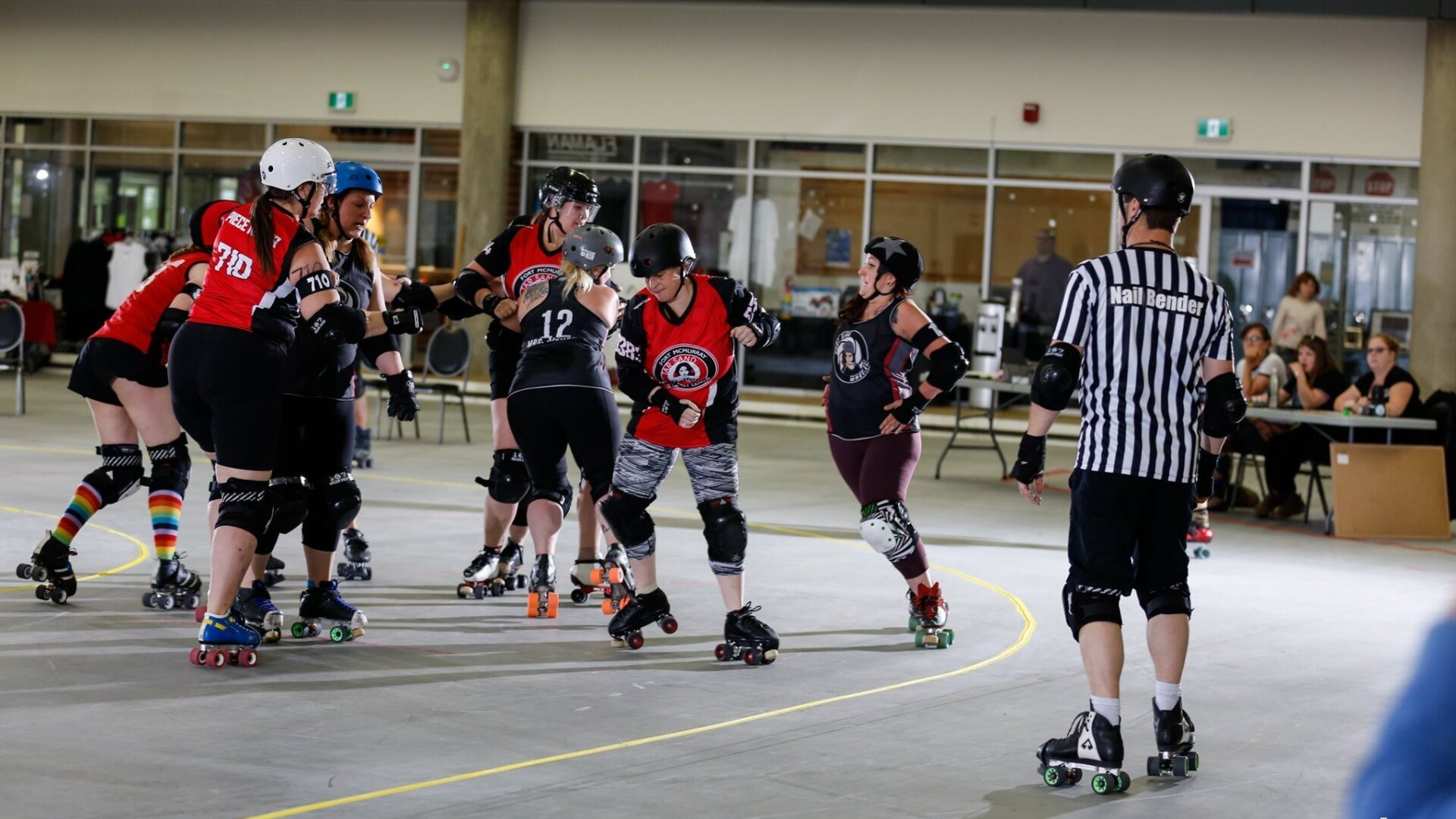
Being able to transition (switch between skating forward and backwards) on roller skates is a fundamental skating skill. But how you learn as a rookie skater does not exactly transfer to what you do on the track. A casual transition is smooth and often you are standing fairly upright, with perhaps some dramatic arm-twirly flare! In a game your transition becomes more of a spin, you use it to get around an opponent, dodge a hit, or to catch up and get back in front of an opponent. In all of these scenarios, you want to be stable and low so no one knocks you off your feet as you turn. The fundamentals of transitions involves shifting your weight from foot to foot while also turning. It sounds simple enough, but where most people struggle with this skill is the weight shift. As we all have a dominant hand, we also all have a preferred leg and putting all of your weight on the other leg feels wrong and uncomfortable. So a big skill you will want to work on while off skates is balance and comfort level being on each leg individually. Any and all single leg exercises will help with your balance and ability to shift your weight between legs. Bringing the transition over to an in-game spin will add on height changes, ie getting low, as well as center of balance. Remember, in-game you are often spinning to avoid being hit, so stability is key for spin moves.
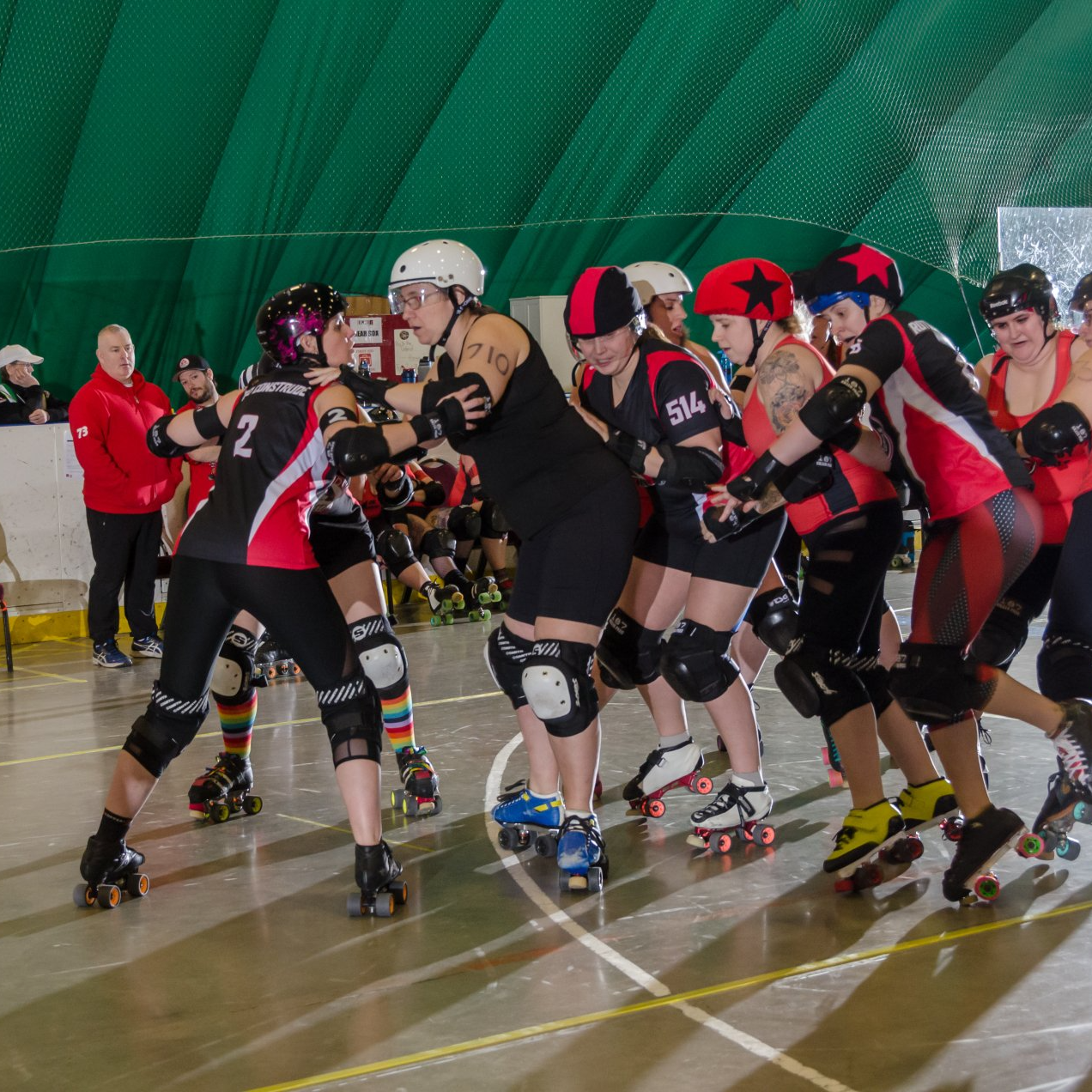
Although the majority of roller derby is played in a forward motion, backwards skating is critical for pushing your game to the next level. Backwards skating can be used by blockers to catch a jammer or support a team mate. Jammers will use backwards skating to escape a hit after spinning around an opponent. No matter what position you play on the team, you will find yourself skating backwards at some point. Practicing the technique and working on skating backwards is your best bet for training, but you will also need to train on your backwards skating and balance off skates during the off-season or because you don’t get much on skate time to work on it. The main focus areas for off skates training will be on muscle building, balance and movement in a backwards direction. We live our lives facing forward, which can make moving backwards feel uncomfortable. So let’s get uncomfortable!
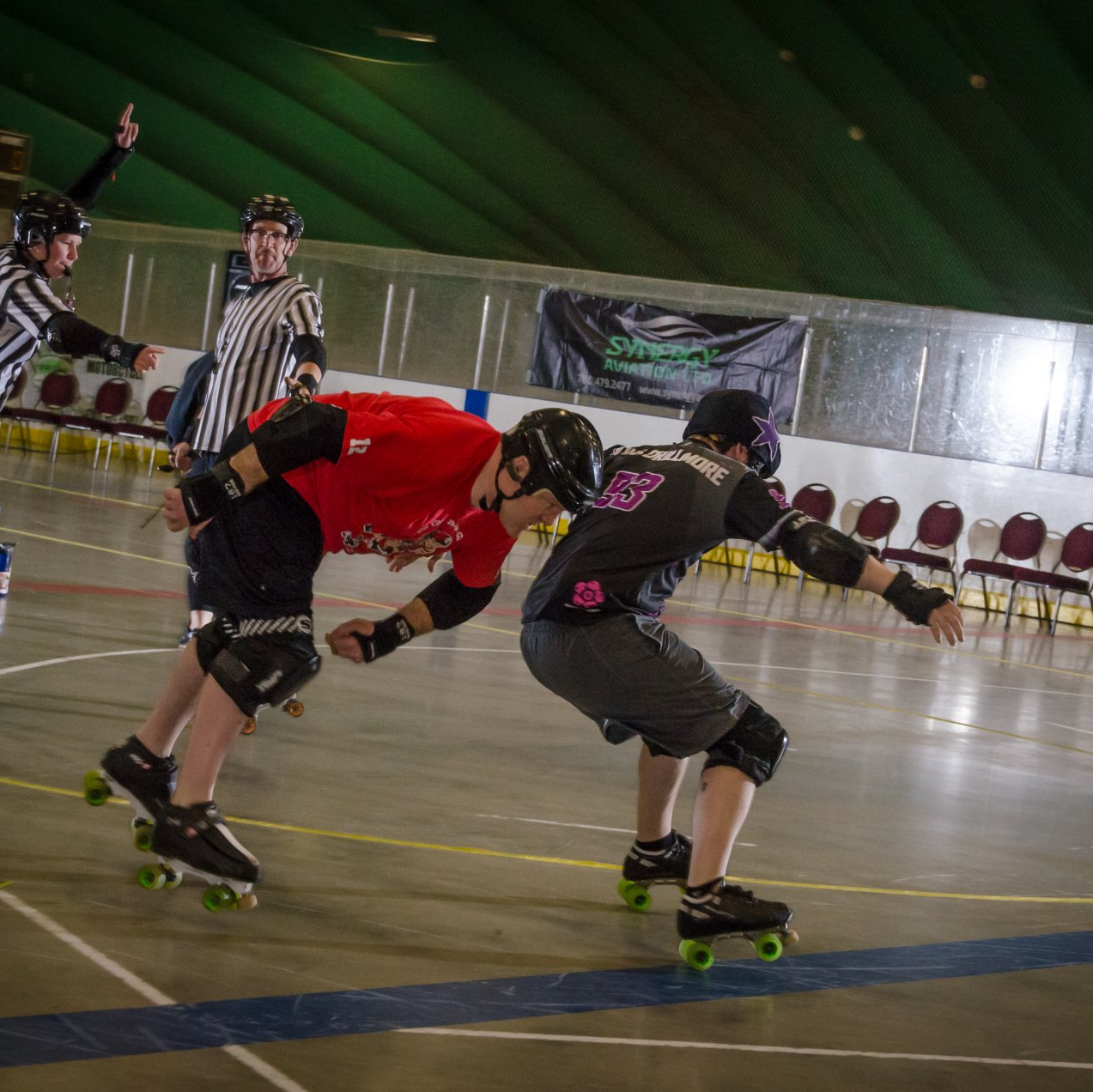
Remember watching that amazing game and seeing that great skater take a huge hit and lose their balance? But the REALLY amazing part was that they didn’t even fall! They were able to take that hit and recover so fast the opposing blocker didn’t have time to reset. In order to understand how they were able to stay up, let’s take a look at the physical aspects, specifically balance and stability. While linked, they are not the same thing. Balance is your core ability to maintain equilibrium against outside forces. Stability is the ability to maintain or return to a desired position when hit with oncoming forces. To give some examples specific to roller derby, the skater staying on the track while riding the curve on one leg is balanced. The blocker skating backwards with their feet staggered when they get hit is stable, whereas the blocker skating backwards with their feet together will get knocked over. How do you train balance and stability? To start off with success, you want to have a strong core and good posture. Balance is about making sure your body is perfectly aligned. Take a moment to try the following exercise: Stand up and hunch over, have a friend push you from behind. Notice how you felt and how you absorbed that push. Next do the same thing but stand with proper posture. You should be able to feel the difference in your stability between the two. To train better posture, you need to find your weak points. There are professionals that can give you an assessment. Main areas most people need to focus on are: increased abdominal strength, less reliance on their lower back, and stronger shoulders. Some great exercises for these are Planks, Plated Twists, Scapula Push Ups, and Back Flys.
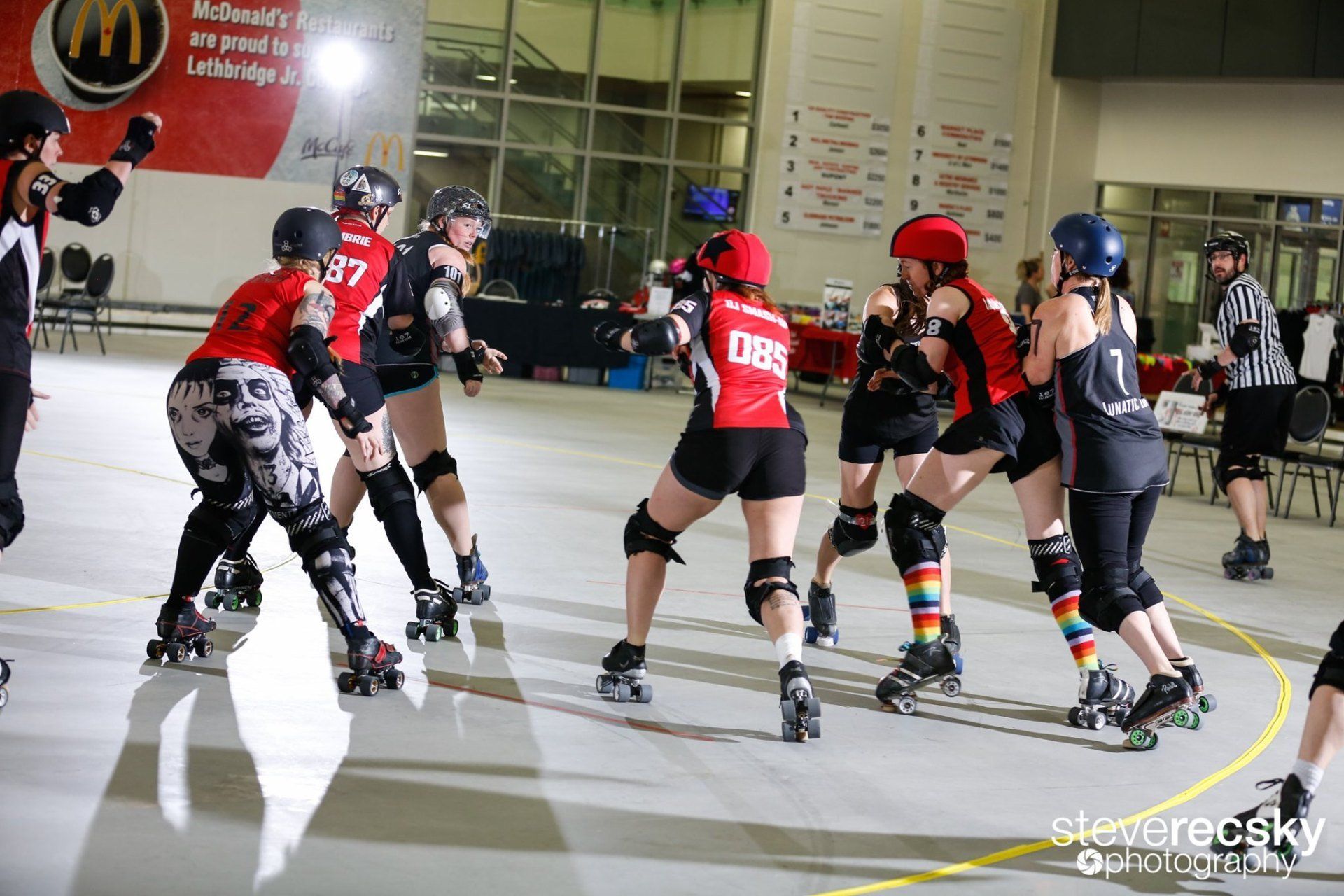
As COVID-19 restrictions are starting to be lifted, a lot of us are excited about returning to roller derby practices. However, before we can dive head first back into practices it’s important to review what that means for your body. You, and your entire team have been away from practices for 3 or more months. That’s the same as being off skates for a minor injury. So what could this mean for your return? Injury risk is going to be higher. While you may have been doing some home training during the break and may even feel fit, you should still consider: Were you consistent with your training each week Did your training start to dwindle in the last few weeks Was your training as intense as a full 2 hour practice or scrimmage Was your entire team training as hard as you One of the leading factors to injury is fatigue. We have all been in those practices where near the end the coach calls the drill off because everyone is getting sloppy. That sloppiness is the fatigue built up over practice and can lead to foggy heads, slower reaction time, mistakes and ultimately injury. Taking fatigue into consideration, when you are returning to practices with your league consider making them shorter or keep the overall intensity low. It will take weeks of consistent practices for you and your team to return to the intensity level you were at pre-COVID-19.
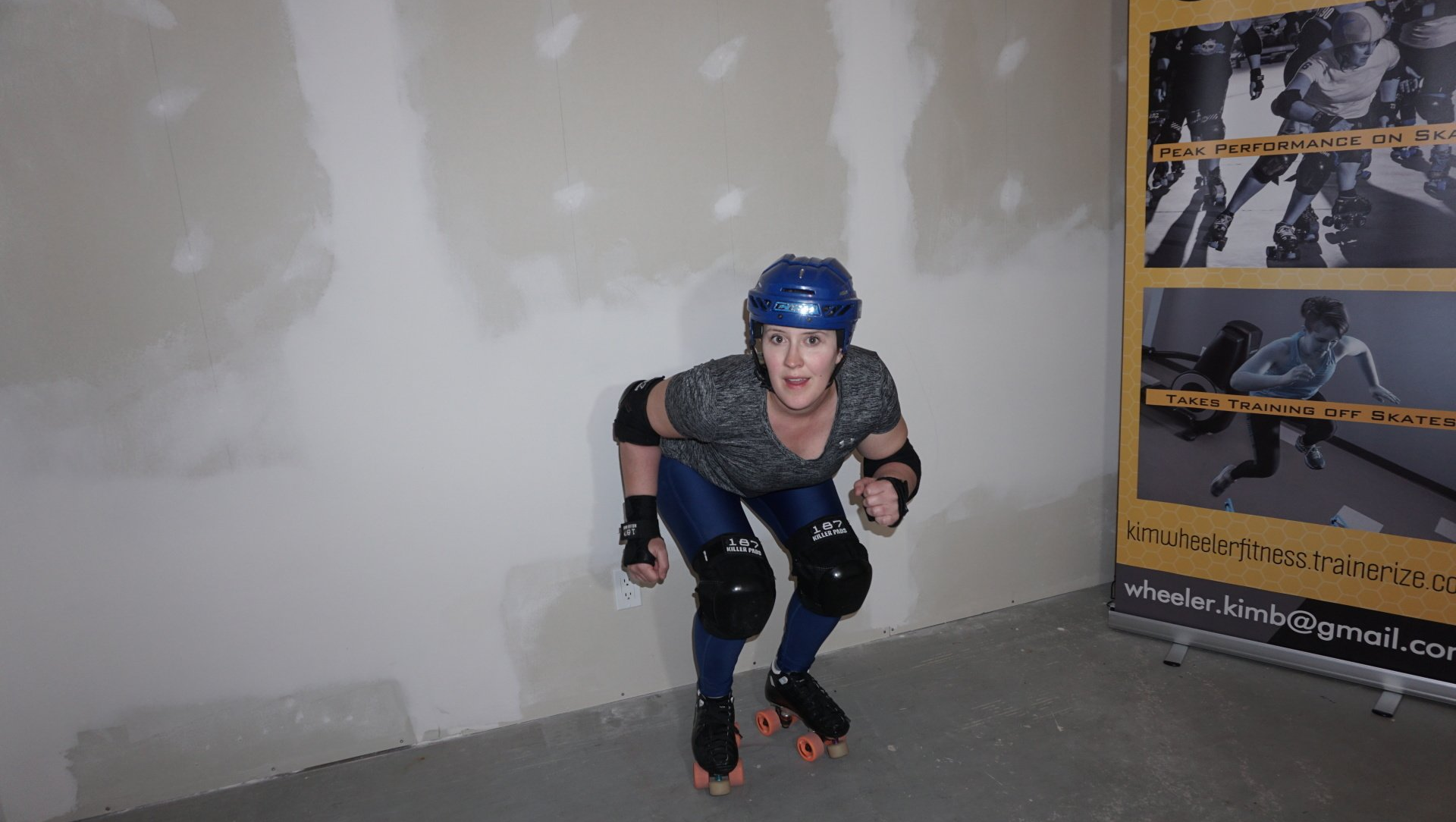
We’ve all heard it before: “Get lower,” “You’re standing too tall,” “Bend your knees!” So you bend down and squat as low as you can and your muscles start to burn. Your skate strides become short and awkward, so you stand back up. But here’s the secret: your coach doesn’t want you to squat as low as you can. So what do they really want from you? The simple answer is that they want you to have more power in your legs. This does come from a lower stance, but not the LOWEST possible stance. Think of your leg muscles like springs. When you’re standing straight up the spring is at rest. When you get lower, the spring is compressed, ready to snap back once you let go. If you get too low the spring is crushed too far and can no longer snap back into shape.
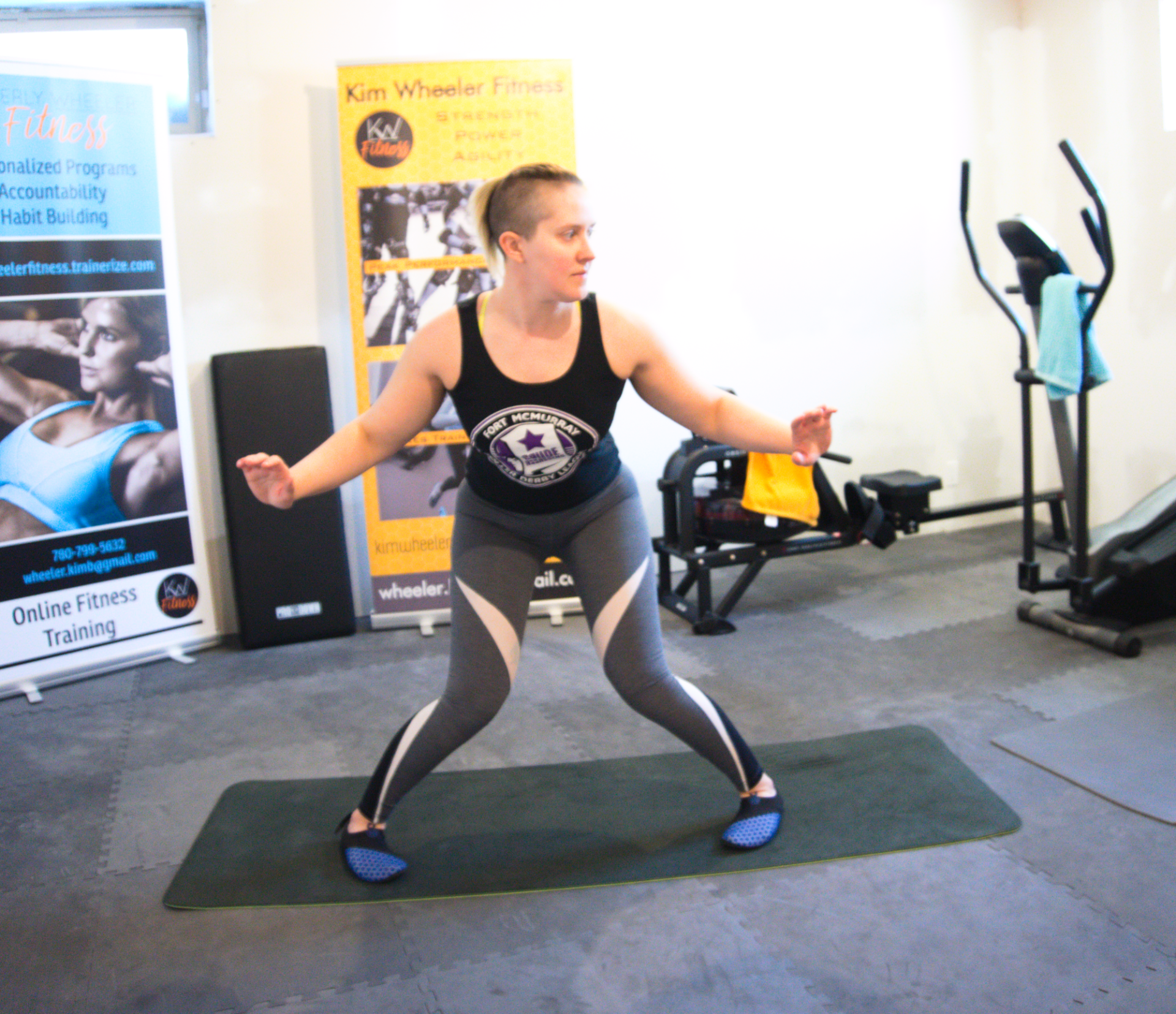
The plow stop is one of the two basic stops you learn to pass minimum skills. But just because it’s learned right away doesn’t mean it’s not important! If you can’t stop in front of a jammer, how do you expect to stop them? Here is the WFTDA Minimum Skills video showing the plow stop. In this video they show a one footed plow stop, and how that is advantageous when blocking with a teammate. Skaters should be able to do a plow stop with either foot forward and entirely even, because sometimes you don’t have a friend to block with. How can you improve your plow stops? First and foremost, is to keep practicing them on skates. But what can you do off skates?
